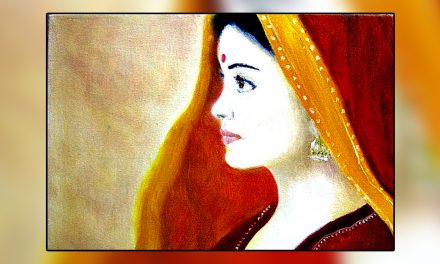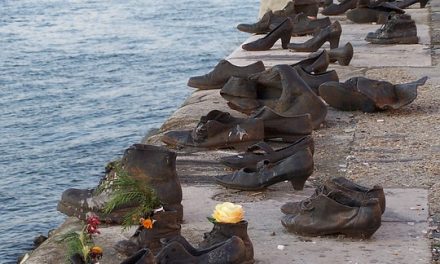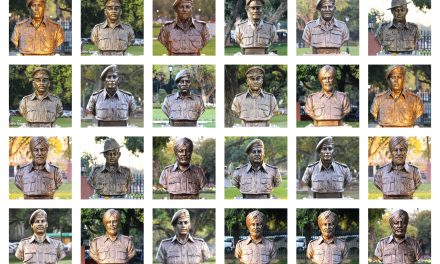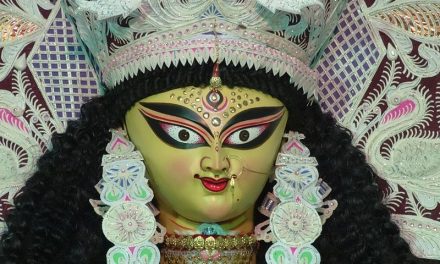Colonial-era Indian nationalism started in Bengal(Mainly Present-day West Bengal, Bihar and Bangladesh) in the nineteenth century. The freedom fighters quickly realised that they first needed to get stronger and sharper to overthrow the colonists. To fulfil that requirement lot of ‘Akhadas'(Gymnasiums) had evolved in every corner of Bengal. Bengali youth started to join Akhada’s to learn Kushti.
Kushti or Pehelwani (Wrestling) is a form of Mall-Yuddha. It was popularised during the Mughal time. Malla-Yuddha is the ancient form of combat wrestling that originated in ancient India. The first written existence of Malla-Yuddha was found in the Hindu epic ‘Ramayana’. Another ancient Hindu epic ‘Mahabharata’ also describes Malla-Yuddha. Bhima was the second brother of the great ‘Pandavas’, a great wrestler himself.
Emergence of Akhadas in Bengal
Ambikacharan Guha, a renowned wrestler, popularly known as ‘Ambu babu’ by the British, had set up such an ‘Akhada’ at Masjidbari Street in North Calcutta(now Kolkata). He pioneered and popularised the art of Kushti (Pehelwani) in Bengal.Ambu babu had two sons Ramcharan Guha(elder son). The other was Khetracharan Guha(younger son), who trained Swami Vivekananda. Jatindracharan Guha was the son of Ramcharan Guha. He was born on 13th March 1892 on the auspicious day of Holi in North Kolkata, got a nickname of ‘Gobor'(cow dung) with jest due to his laziness and his surname ‘Guha’ was converted into ‘Goho’ by the British and came into being as ‘Gobor Goho’ for his lifelong and following the demise.
The ‘Guha family earned its fame for patronising and pioneering this fascinating art of Pehelwani and physical culture in Bengal for generations. Ramcharan Guha, the proud father of Jatindracharan Guha aka ‘Gobor Goho’, was also a scholar in this art. Jatindra charan Guha started to adopt his initial training under his great grandfather, Ambikacharan Guha. Subsequently, he learned from his father Ramcharan Guha and uncle Khetracharan Guha(Khetu babu). Jatindra charan Guha was so fortunate to enrich his knowledge in wrestling from the two other famous wrestlers of that era known as Khosla Chaubey and Rahmani Pehelwan, who the ‘Guha family appointed’. Alongside wrestling, Gobor Goho had an immense interest in Hindustani classical music. He eagerly adopted training from Kukuv Khan. His presence at the house party of Narendranath Basu was a usual scenario. As he gradually got his youth, his height touched six feet and one inch; he weighed around 290 pounds(132kgs) and expanded his chest by 48 inches.
Jatindra charan Guha(Gobor Goho) established himself as a wrestler in 1910, defeating Navrang Singh, the wrestler of the solicitation of the Maharaja of Tripura but did not receive any remuneration. He accompanied Sarat Kumar Mitra, Gabor’s brother-in-law, for a trip to Lucknow to enjoy matches of the best wrestlers of his time, such as Ghulam Mohammad Baksh Butt(commonly known as Rustam-e-Hind and famed as his ring name ‘The Great Gama’ or ‘Gama Pehelwan’) and Rahim Sultaniwala. Here he made a master plan and induced Sarat to provide funds for the Indian wrestlers to set out for London to fight with international wrestlers with a motto to establish themselves that how good they were. According to the plan, in the year 1910, with the invitation of John Bull Society to participate in a competition, a team consisting of ‘The Great Gama’ with his brother, Imam Baksh and two others, a cook, some helpers including Sarat and Gobor took off for England although Gobor had to back immediately in Kolkata due to his mother’s illness. The Great Gama did his miracle there and established himself as a classical wrestler in the world. Hence India achieved its subnormality on the world wrestling map. It was Gabor’s foresight that made it possible.
Gobor had his second tour of Europe in 1913 when he met in the ring with a few champion wrestlers. Jimmy Campbell and Jimmy Esson of Scotland were famed for their efficiencies in wrestling. Jimmy Campbell was the highest-ranked wrestling champion of Scotland. The other one, Jimmy Esson, was the Scottish strongman dressed with an epithet of ‘The Scottish Giant’. Gobor Goho fought an agitating match with Jimmy Campbell at Edinburgh, took one hour and five minutes, ended with a victory (Gobor Goho). He fought his next challenge against Jimmy Esson, in which Esson took the assistance of deception with illegal boxing punches. This revived Esson a little into the game, but Goho was unbeatable and kept his effort continuing onto the ground. Although Goho complained to the judges, they were unconcerned. Not only that, they presented the ‘John Bull Belt’ to Jimmy Esson one-sidedly. So, at last, Gobor Goho was victimised and returned home in 1915. Finally, Gobor was bolded for his third trip to Europe and the U.S.A. from 1920 to 1926. In the U.S.A., he fought the biggest match named ‘America’s Light heavyweight champion’ and triumphed over Adolf Santel on 30th August 1921. Thus, he became the first Asian to win World Light Heavyweight Championship in the United States.
Next, he faced Ed ‘Strangler’ Lewis, the greatest ever professional wrestler and deductively, he was deprived of also. Gobor fought his last match against the younger Gama at Park Circus, Kolkata, in 1929. That fight was a milestone in Indian wrestling. Gobor was overpowered technically. After this, Gobor was bolded to embody the akhada set up by his predecessor, Ambikacharan Guha at Masjidbari Street in 1936 at Goabagan (which currently has been renamed by ‘Gobor Goho’s Gymnasium running consistently at 19/D/H/7, Gobor Goho Sarani, previously known as Goabagan Street, Kolkata-700006 near the Scottish Church College). And finally came the memorable year 1944, in which Gobor Goho took his professional retirement from wrestling. An American newspaper had dressed him with jest with ‘Hindu Giant’ due to Adolf Santel. He kept his mark in patriotism and agreed with Rabindranath Tagore in protest against the Jalianwallah Bagh massacre. Tagore gave up his epithet ‘Knighthood’, ornamented with the British. Gobor was invited to deliver his remarks in which he emphasised Tagore’s vision, life and teaching. Unfortunately, this legendary Indian wrestler passed away on 2nd January 1972 at 79 in Kolkata after making India successful in wrestling.
Image courtesy: BengaliHIndu

















